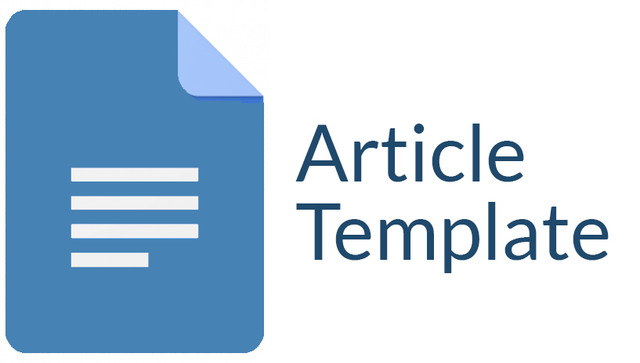Membangun Budaya 5R : Langkah Strategis Untuk Mendukung Perbaikan Terus Menerus di MTs Amdadiyah Kweden
DOI:
https://doi.org/10.29407/dimastara.v2i2.20510Keywords:
5R, continuous improvement, archiving, cultureAbstract
The 5R method (Concise, Neat, Cool, Caring, Diligent) is a method that aims to maintain the cleanliness of the work area at all times, eliminating waste in moving goods and waste in searching for tools and materials. The 5R method can be integrated into various fields, such as: information technology, health, education, small and medium enterprises, to social organizations. The 5R culture is a technical step that aims to foster attitudes and behaviors, thus forming a culture of discipline on every front. The habit of practicing 5R also encourages continuous improvement in various fields. Madrasah Tsanawiyah (MTs) Amdadiyah Ngasem as one of the educational institutions every year always has new students so there is a lot of data that must be recapitulated and stored both in the form of softcopy and hardcopy. If it is not managed properly, archiving data will be a problem so that when the data is needed, it will take a long time to get it. The extracurricular activities fostered in this Madrasah are quite a lot, with a lot of extracurriculars, of course, there are many necessary equipment. The arrangement and maintenance of the equipment used must be considered so that the equipment is easy to find if needed and becomes more durable. Therefore, a system is needed that can be used to improve data archiving and equipment structuring and maintenance. The solution offered to solve existing problems is to implement a 5R culture. From the socialization, data was obtained that as many as 89% of respondents expressed interest in implementing 5R both in Madrasah and at home and there were only 11% who expressed interest in implementing 5R in Madrasah only. From the questionnaire provided, it is also known that 56% of respondents believe that 5R can be applied and there are 44% of respondents who state that 5R may be applicable in MTs Amdadiyah Kweden. The reasons for the 44% of respondents who stated that 5R might be workable were: lack of knowledge about 5R (38%), cost (38%), commitment of all elements of the school (24%).
Downloads
References
[2] B. K. Asmarani and C. Alichia, “Implementasi Budaya 5R (Ringkas, Rapi, Resik, Rawat, Dan Rajin) Pada Kelompok Belajar Binaan Komplek Kodam Jatiwaringin,” Prapanca: Jurnal Abdimas, vol. 1, no. 2, pp. 44–50, 2021.
[3] H. Suprayitno, D. R. Rahadi, and R. Rusdianto, “Mencegah Kecelakaan Kerja Dengan Budaya 5R,” Jurnal Pengabdian kepada Masyarakat Bina Darma, vol. 1, no. 1, pp. 20–29, 2021.
[4] A. R. H. Rantung, O. R. Pinontoan, and L. Suoth, “Analisis Penerapan Budaya 5R (Ringkas, Rapi, Resik, Rawat, Rajin) Pada Pembangunan Gedung Fakultas Hukum Universitas Sam Ratulangi Oleh PT. Adhi Karya (Persero) Tbk,” KESMAS: Jurnal Kesehatan Masyarakat Universitas Sam Ratulangi, vol. 7, no. 5, 2018.
[5] D. Sartono and M. Abduh, “Pengaruh Program 5R (Ringkas, Rapi, Resik, Rawat, Rajin) Terhadap Produktivitas Kerja Karyawan Pada Produksi Pemintalan Benang Di Pt. Xyz,” Jurnal Universitas Esa Unggul, hal 1, vol. 13, 2012.
[6] I. S. Nusannas, “Implementasi Konsep Budaya 5R (Ringkas, Rapi, Resik, Rawat Dan Rajin) Sebagai Upaya Meningkatkan Kinerja Perusahaan Dari Sisi Non Keuangan,” Eqien-Jurnal Ekonomi dan Bisnis, vol. 3, no. 2, pp. 93–106, 2016.
[7] O. D. Sandika, “Implementasi Budaya 5r (Ringkas, Rapi, Resik, Rawat, Dan Rajin) Di Unit Machinery And Tool (Umt) Pt. Mega Andalan Kalasan,” Jurnal Nosel, vol. 2, no. 3, 2014.
Downloads
Published
Issue
Section
License
Penulis yang menerbitkan jurnal ini menyetujui persyaratan berikut:
- Hak cipta atas artikel apa pun dipegang oleh penulisnya.
- Penulis memberikan jurnal, hak publikasi pertama dengan karya yang dilisensikan secara bersamaan di bawah Lisensi Atribusi Creative Commons yang memungkinkan orang lain untuk membagikan karya dengan pengakuan atas kepenulisan dan publikasi awal karya tersebut dalam jurnal ini.
- Penulis dapat membuat pengaturan kontrak tambahan yang terpisah untuk distribusi non-eksklusif dari versi jurnal yang diterbitkan dari karya tersebut (misalnya, mempostingnya ke repositori institusional atau menerbitkannya dalam sebuah buku), dengan pengakuan dari publikasi awalnya di jurnal ini.
- Penulis diizinkan dan didorong untuk memposting karya mereka secara online (misalnya, di repositori institusional atau di situs web mereka) sebelum dan selama proses pengiriman, karena hal itu dapat mengarah pada pertukaran yang produktif, serta kutipan yang lebih awal dan lebih besar dari karya yang diterbitkan.
- Artikel dan materi terkait yang diterbitkan didistribusikan di bawah Lisensi Internasional Creative Commons Attribution-ShareAlike 4.0













